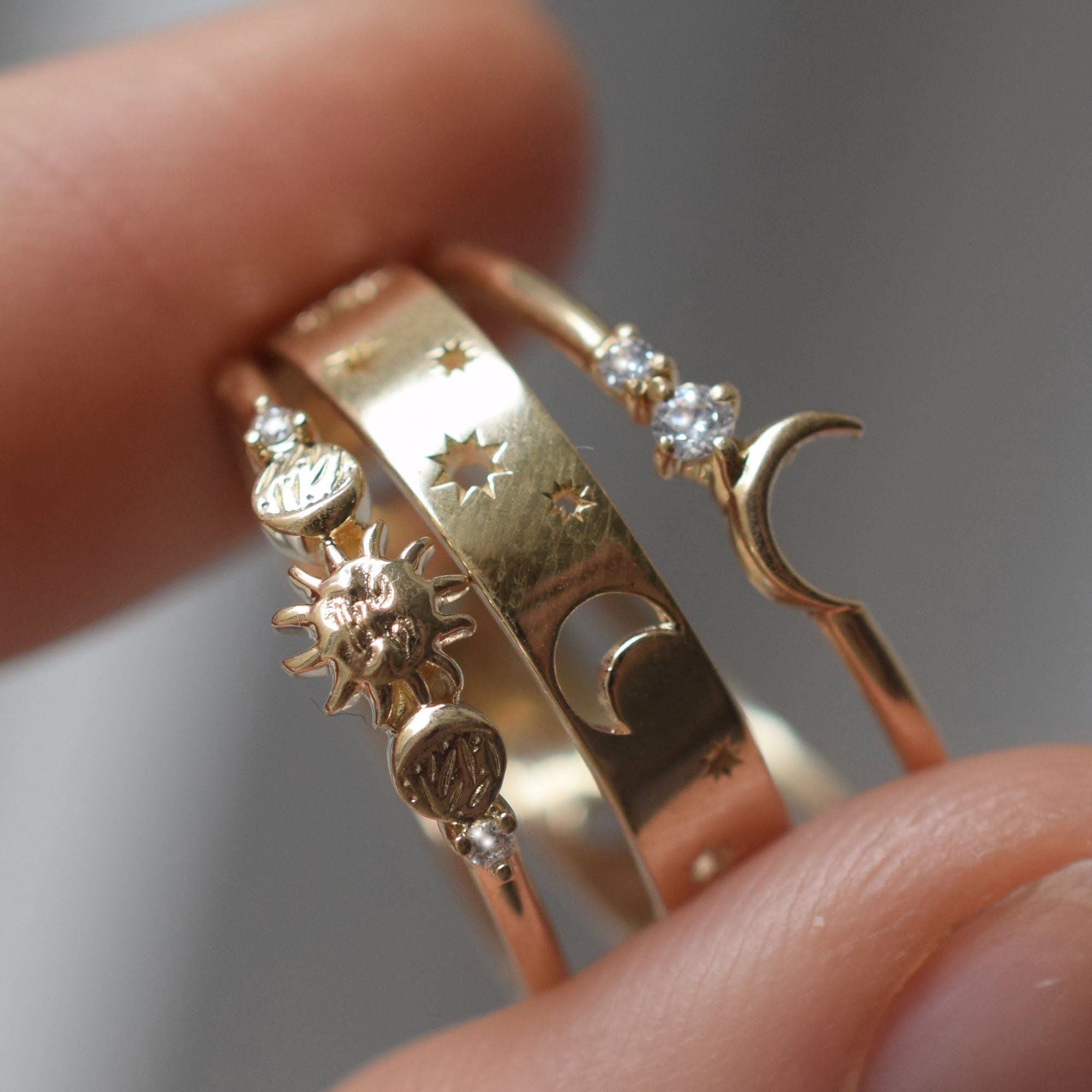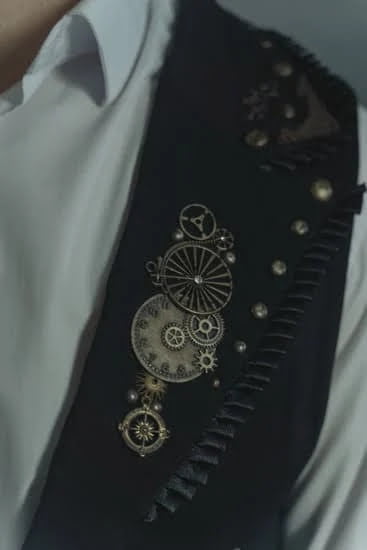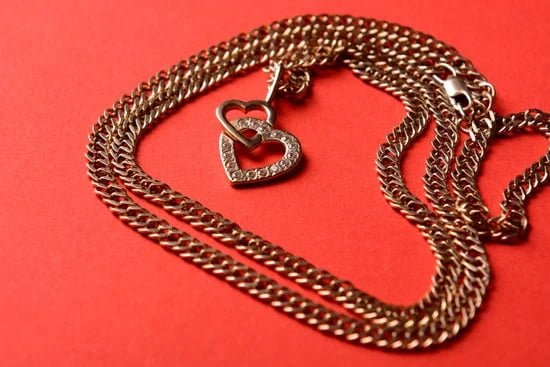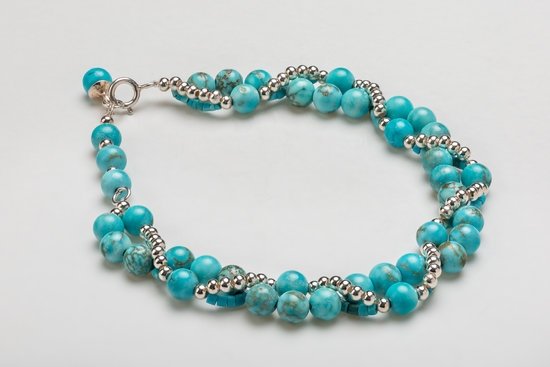The allure of diamond jewelry has captivated individuals for centuries, symbolizing luxury, elegance, and status. Yet, one question that often arises is how much diamond jewelry is marked up from its actual value. This article seeks to delve into the intricate world of diamond pricing and shed light on the mysterious markups prevalent within the industry.
When it comes to diamond jewelry, there exists a common perception of excessive markups. Consumers often find themselves questioning whether they are truly getting their money’s worth or if they are simply victims of inflated prices. This intrigue surrounding the pricing of diamond jewelry has fueled curiosity among buyers seeking transparency.
Deciphering the secrets behind diamond pricing requires understanding the components that contribute to a diamond’s price. The well-established industry standards for grading diamonds according to their 4Cs – carat weight, clarity, color, and cut – play a significant role in determining value. By breaking down these factors and exploring how they influence pricing, we can begin to uncover the formula behind diamond valuation.
Intrigued by this mysterious world of markups and pricing? Join us as we unveil the secrets behind the markup game in the diamond jewelry industry.
Delve into deciphering the diamond pricing formula, explore the influence of luxury brands on prices, uncover hidden markups within distribution chains, analyze retail markups and profit margins enjoyed by industry players, understand external factors affecting prices, and ultimately learn how to make informed purchasing decisions as an educated consumer. Get ready to demystify the markup game in the world of diamond jewelry.
Deciphering the Diamond Pricing Formula
Breaking Down the Components of Diamond Pricing
One of the factors contributing to the mystery surrounding diamond jewelry pricing is the complex formula used to determine its value. To decipher this formula, it is essential to understand the various components that play a role in determining the price of a diamond. These components include carat weight, clarity, color, and cut – commonly known as the 4Cs.
Carat weight refers to the size of the diamond and is measured in metric carats. Generally, the larger the carat weight, the higher the price. However, it is important to note that carat weight alone does not determine a diamond’s value; other factors are equally significant.
Clarity refers to any internal or external imperfections within a diamond. Diamonds with fewer flaws fetch higher prices due to their rarity. Clarity grades range from Flawless (no imperfections visible under 10x magnification) to Included (imperfections visible with naked eye).
Color grading determines a diamond’s colorlessness, with D being completely colorless and Z displaying yellow or brown tones when evaluated by professionals. The more colorless a diamond appears, typically categorized as D-F, will command higher prices due to their desirability.
Cut refers to how well a diamond has been shaped and faceted from its raw form. Grades for cut range from Excellent/Ideal (reflecting maximum light) to Poor (resulting in minimal sparkle). Diamonds with superior cuts can be more costly due to meticulous craftsmanship and maximizing brilliance.
Industry Standards for Pricing
The diamond industry has established certain standards for pricing diamonds based on their quality characteristics – known as effective pricing grids or lists. These standards help establish a common language for communication between buyers and sellers in an industry where each stone has unique attributes.
One widely recognized pricing list is maintained by the Gemological Institute of America (GIA), which assigns a grade for each of the 4Cs. Several other diamond grading laboratories around the world also maintain their own pricing lists. These standardized lists provide a baseline for determining the price of a diamond, taking into account its unique combination of characteristics.
It is important to note that while these pricing lists are generally accepted in the industry, individual retailers may exercise some discretion in their pricing strategies based on factors such as overhead costs and market demand. Therefore, it is crucial for consumers to do their research and compare prices from various sources to ensure they are getting a fair deal.
The Influence of the 4Cs
The 4Cs – carat weight, clarity, color, and cut – have a significant impact on diamond pricing. Each aspect plays a crucial role in defining the quality of a diamond and affects its ultimate value.
Carat weight is often seen as one of the most influential factors in determining the price of a diamond. This is because larger diamonds are rarer and require more effort to mine and cut. As a result, diamonds with higher carat weights tend to command higher prices.
Clarity also has a substantial impact on pricing. Diamonds with fewer imperfections or blemishes are considered more valuable due to their rarity. However, it’s important to note that slight differences in clarity may not always be visible to the naked eye but can still significantly affect pricing.
Color is another critical consideration when evaluating diamonds. Completely colorless diamonds (grade D) are exceptionally rare and desirable, attracting premium prices. However, slight variations in color within specific ranges may not significantly impact the overall appearance and value of a stone.
Lastly, cut quality significantly affects a diamond’s brilliance and sparkle. Excellent or ideal cuts reflect light optimally within the stone, enhancing its aesthetic appeal. Diamonds with superior cuts generally demand higher prices due to their exceptional beauty.
Understanding how these elements interact with each other can help consumers make more informed purchasing decisions, ensuring they find the best value for their money when it comes to diamond jewelry.
The Role of Branding
Luxury brands play a significant role in the pricing of diamond jewelry. The allure and prestige associated with these brands contribute to the premium prices consumers are willing to pay. When it comes to diamond jewelry, the brand name can significantly impact the price tag.
One of the main reasons why luxury brands can command higher prices is their reputation for high-quality craftsmanship and exquisite designs. Consumers are often willing to pay more for a piece of diamond jewelry if it bears the name of a renowned luxury brand. These brands have spent years cultivating an image of exclusivity and exceptional quality, building trust among consumers that their products are worth the price.
Another factor contributing to the pricing of branded diamond jewelry is the significant investment luxury brands make in marketing and advertising. These campaigns help create and maintain brand perception, fueling consumer desire for their products. The costs associated with promoting these brands are factored into the overall price of the jewelry.
| Factors Influencing Diamond Jewelry Pricing | Description |
|---|---|
| Brand Reputation | The reputation and perception associated with luxury brands impact consumer willingness to pay higher prices. |
| Marketing and Advertising Costs | The expenses incurred by luxury brands in promoting their products are included in diamond jewelry pricing. |
It’s important to note that not all branded diamond jewelry commands a premium price simply because it carries a well-known name. Some luxury brands use lower-quality diamonds or lesser-grade materials in certain collections, offering options at different price points. However, for those seeking the top-tier quality and craftsmanship associated with luxury brands, they should expect to see higher prices due to branding alone.
Unveiling the Distribution Chain
The diamond jewelry industry involves a complex distribution chain that contributes to the markups consumers pay for their purchases. Understanding the different stages in this distribution chain can shed light on why diamond jewelry is often sold at higher prices.
At its core, the diamond supply chain consists of four main stages: mining, sorting and cutting, wholesale, and retail. Each stage adds its own markup to the cost of the diamond jewelry, ultimately affecting the final price paid by consumers.
In the mining stage, diamonds are extracted from mines and undergo a process of sorting and cutting to transform them into desirable gems. This stage incurs various costs including labor, equipment, transportation, and compliance with industry regulations. These costs are then passed on to the subsequent stages in the distribution chain.
Once diamonds have been sorted and cut, they enter the wholesale market where they are sold to retailers. Wholesalers purchase large quantities of diamonds at lower prices due to economies of scale. However, they still add their own markup before selling to retailers. This markup covers overhead costs such as storage facilities, sales staff salaries, insurance, and profit margins.
Finally, retailers acquire diamond jewelry from wholesalers and sell them directly to consumers. Retailers typically incur additional costs such as rent for physical stores or maintenance expenses for online platforms. Retail markups can vary significantly depending on factors such as location, brand reputation, and perceived value associated with their offerings.
| Stage | Markup |
|---|---|
| Mining | Initial cost + Mining expenses |
| Sorting & Cutting | Mining cost + Sorting/cutting expenses |
| Wholesale | Sorting/cutting cost + Wholesale markup |
| Retail | Wholesale cost + Retail markup |
It is important to note that these markups are not necessarily excessive or unjustified. Each stage plays a crucial role in the distribution chain and incurs its own costs and risks. While consumers may be wary of high markups, understanding the factors at play can ultimately help them make more informed purchasing decisions.
Retail Markup
The retail markup is the final factor that significantly contributes to the price you pay for diamond jewelry. It encompasses various costs associated with running a retail store and aims to reflect the perceived value of the product. Understanding the elements of the retail markup can help consumers make more informed decisions when purchasing diamond jewelry.
One component of the retail markup is the cost of operating a physical store. This includes expenses such as rent, utilities, insurance, and employee wages. Retailers factor in these costs when determining the price of their products. Additionally, retailers may invest in advertising and marketing campaigns to promote their brand and attract customers, which adds another layer to the retail markup.
Perceived value also plays a crucial role in setting the price of diamond jewelry. Luxury brands often charge higher prices based on their reputation, craftsmanship, and exclusivity. The association with a prestigious brand can justify a higher price tag for consumers who are willing to pay for both quality and brand recognition. Retailers take advantage of this mindset by pricing their branded diamond jewelry at premium levels.
Pricing strategies employed by retailers further contribute to the retail markup. For example, retailers may offer discounts or sales promotions to entice customers into making a purchase. However, it’s important to be aware that even with these discounts, there is still a margin built into the original price. The perceived discount may create an illusion of getting a good deal but consumers should keep in mind that they are still paying a significant amount above wholesale costs.
Industry Margins
The Profit Margins Enjoyed by Diamond Jewelry Industry Players
One of the most eye-opening aspects of diamond jewelry pricing is the profit margins enjoyed by industry players. While consumers are often aware that there is some level of markup involved in the pricing, many are unaware of just how substantial these markups can be. Jewelers have long kept this information closely guarded, as it may lead to a loss of trust and potential backlash from customers.
The Stark Difference between Wholesale and Retail Prices
One key aspect to understand when it comes to industry margins is the stark difference between wholesale and retail prices. Diamonds are typically bought at wholesale prices directly from diamond cutters or suppliers. These diamonds then go through a series of intermediaries before reaching the end customer, each adding their own markup along the way. This results in a significant increase in price from the wholesale cost to the final retail price.
According to industry experts, the markup on loose diamonds can range anywhere from 15% to 100%, depending on the specific stone’s characteristics and market demand. The markup for diamond jewelry can be even higher, with reports suggesting markups ranging from 100% to over 1,000% for finished pieces. This wide range highlights the flexibility jewelers have when it comes to pricing their products.
The Markups Hidden Behind Discounts and Sales Promotions
Another important factor to consider is the markups hidden behind discounts and sales promotions. It is common for jewelers to advertise discounts or sales events to entice customers, but these promotions are often based on inflated retail prices.
By offering a percentage off an artificially high price point, retailers create an illusion of savings while still maintaining their desired profit margin. Consumers must approach these discounts with caution and evaluate whether they genuinely represent a good deal or simply a marketing strategy.
It is important for buyers to be aware of these industry margins to make informed purchasing decisions. By understanding the substantial markups and the difference between wholesale and retail prices, consumers can have more realistic expectations when considering diamond jewelry purchases.
The Influence of External Factors
Understanding the impact of external factors on diamond jewelry pricing is crucial for consumers who want to make informed purchasing decisions. The market plays a significant role in driving the prices of diamonds, and being aware of these factors can help buyers understand why prices fluctuate.
One major factor that influences diamond prices is supply and demand. The rarity of diamonds contributes to their high value, and when demand outpaces supply, prices tend to rise. Conversely, if there is an oversupply of diamonds in the market, prices may decrease. Other factors such as economic conditions, global events, and changes in consumer preferences can also affect demand and consequently impact diamond pricing.
Economic fluctuations can have a significant impact on diamond prices. During times of economic downturns or uncertainty, consumers may be more hesitant to spend money on luxury items like diamond jewelry. As a result, diamond prices may decrease due to lower demand. Conversely, during periods of economic prosperity, people may feel more inclined to splurge on luxury items and thereby drive up the demand for diamonds.
Global events can also influence diamond prices. Wars or political unrest in major diamond-producing regions can disrupt the supply chain and lead to price increases if there is a scarcity of diamonds available in the market. Additionally, changes in currency exchange rates can affect the affordability of diamonds for consumers in different countries.
It is important for consumers to stay informed about these external factors that drive diamond prices. By understanding how supply and demand dynamics work or keeping track of global events and economic trends, buyers can time their purchases strategically or take advantage of favorable market conditions. Ultimately, being aware of these external factors allows consumers to make better-informed decisions when it comes to purchasing diamond jewelry.
Educated Consumer
In the world of diamond jewelry, being an educated consumer is crucial when making purchasing decisions. By understanding the factors that contribute to diamond pricing and being aware of industry markups, consumers can ensure they are getting the best value for their money. Here are some ways consumers can make informed purchasing decisions:
- Educate Yourself on Diamond Pricing: To make informed decisions, it is essential to have a good grasp of how diamonds are priced. Familiarize yourself with the 4Cs – carat weight, clarity, color, and cut – as these factors greatly influence a diamond’s price. Additionally, research industry standards for pricing and compare prices from different retailers to get an idea of what is reasonable.
- Consider Alternative Options: While traditional brick-and-mortar jewelry stores may be the go-to option for many when purchasing diamond jewelry, consider exploring alternative options such as online retailers or independent jewelers. These options often have lower overhead costs and may offer more competitive prices than traditional stores.
- Evaluate Ethical Sourcing: As consumers become more environmentally conscious, ethical sourcing has become an important consideration when purchasing diamonds. Look for jewelers that offer ethically sourced diamonds and provide transparency in their sourcing methods. This ensures that your purchase not only meets your quality standards but also aligns with your values.
- Negotiate and Seek Value: Don’t hesitate to negotiate the price with a jeweler. Many times, there is room for negotiation, especially if you are buying higher-priced items or multiple pieces at once. Additionally, focus on finding value rather than simply aiming for the lowest price. Look for features that matter most to you within your budget and prioritize quality over just getting a good deal.
- Read Reviews and Seek Recommendations: Before making a purchase, read customer reviews and seek recommendations from friends or family members who have bought diamond jewelry in the past. Their experiences can provide valuable insights into reputable jewelers or online retailers.
By becoming an educated consumer, you can navigate the world of diamond jewelry and make informed purchasing decisions. Remember to do your research, consider alternative options, evaluate ethical sourcing, negotiate when appropriate, and seek recommendations. With these strategies in place, you can feel confident that you are getting the best value for your money while also supporting reputable jewelers.
Conclusion
In conclusion, the diamond jewelry industry’s pricing and markups can often be seen as enigmatic and excessive. However, by dissecting the diamond pricing formula, examining the role of branding, unveiling the distribution chain, understanding retail markups, analyzing industry margins, and considering external factors that drive prices, we have shed light on the mystery surrounding diamond jewelry markups.
One important aspect to note is that the pricing of diamond jewelry is not solely based on subjective factors or arbitrary decisions. Instead, it is influenced by a combination of objective factors such as carat weight, clarity, color, and cut. Understanding these components and established industry standards for pricing can help buyers make more informed purchasing decisions.
Luxury brands play a significant role in influencing diamond jewelry pricing. The allure and prestige associated with branded jewelry often result in consumers paying a premium for brand recognition. It is crucial for buyers to evaluate whether this added cost aligns with their own values and priorities.
Additionally, it is essential to be aware of the various markups throughout the distribution chain from mining to retail. Each stage adds its own costs which are ultimately passed on to consumers. By being informed about these markups and other factors that drive prices such as market conditions and global events, buyers can better understand why certain pieces may come with a higher price tag compared to others.
In order to navigate through the mystery of diamond jewelry markup, it is crucial for consumers to educate themselves on evaluating prices and negotiating for the best value. By considering alternative options beyond traditional retailers and seeking out ethically sourced diamonds, buyers can make more conscious choices that align with their own values. Ultimately, transparency in the industry becomes paramount in empowering consumers to make critical and informed buying decisions.
By demystifying the diamond jewelry markup game through understanding its various components such as pricing formulas, branding influence, distribution chain markups, retail costs, industry margins as well as external factors driving prices – consumers gain the knowledge to become more skeptical yet consciously informed buyers. And in a world where transparency is key, this information will allow consumers to demand it and reduce questionable markups within the diamond jewelry industry.
Frequently Asked Questions
What is the standard markup on diamonds?
The standard markup on diamonds can vary depending on various factors such as the quality and size of the diamond, market demand, and the retailer’s pricing strategy. Generally, the markup is often around 100%-200% of the wholesale cost.
This means that if a jeweler purchases a diamond for $5,000 from a wholesaler, they might sell it to a customer for $10,000-$15,000. However, it’s important to note that this markup can differ significantly among different jewelers and in various regions.
How much do jewelers mark up prices?
Jewelers typically mark up prices based on their business expenses and desired profit margins. While there isn’t one fixed percentage or formula for how much jewelers mark up prices universally, they generally aim for a markup that allows them to cover their costs and generate reasonable profits.
Commonly, jewelers apply a markup ranging from 50%-100%, although it can be higher or lower depending on their specific business model and market conditions.
What is the profit margin on diamond jewelry?
The profit margin on diamond jewelry refers to the percentage of profit earned by jewelers after deducting all costs associated with acquiring or producing the piece of jewelry. This profit margin can fluctuate depending on various factors such as materials used, labor costs, overhead expenses (rent, utilities), marketing expenses, and competition within the marketplace.
Typically, for well-established jewelry retailers, profit margins can range anywhere from 20%-40%. However, smaller independent jewelers might have slightly lower margins due to tighter competition or lower economies of scale in comparison to larger chains or wholesalers operating at greater volumes.

Welcome to my jewelry blog! My name is Sarah and I am the owner of this blog.
I love making jewelry and sharing my creations with others.
So whether you’re someone who loves wearing jewelry yourself or simply enjoys learning about it, be sure to check out my blog for insightful posts on everything related to this exciting topic!





